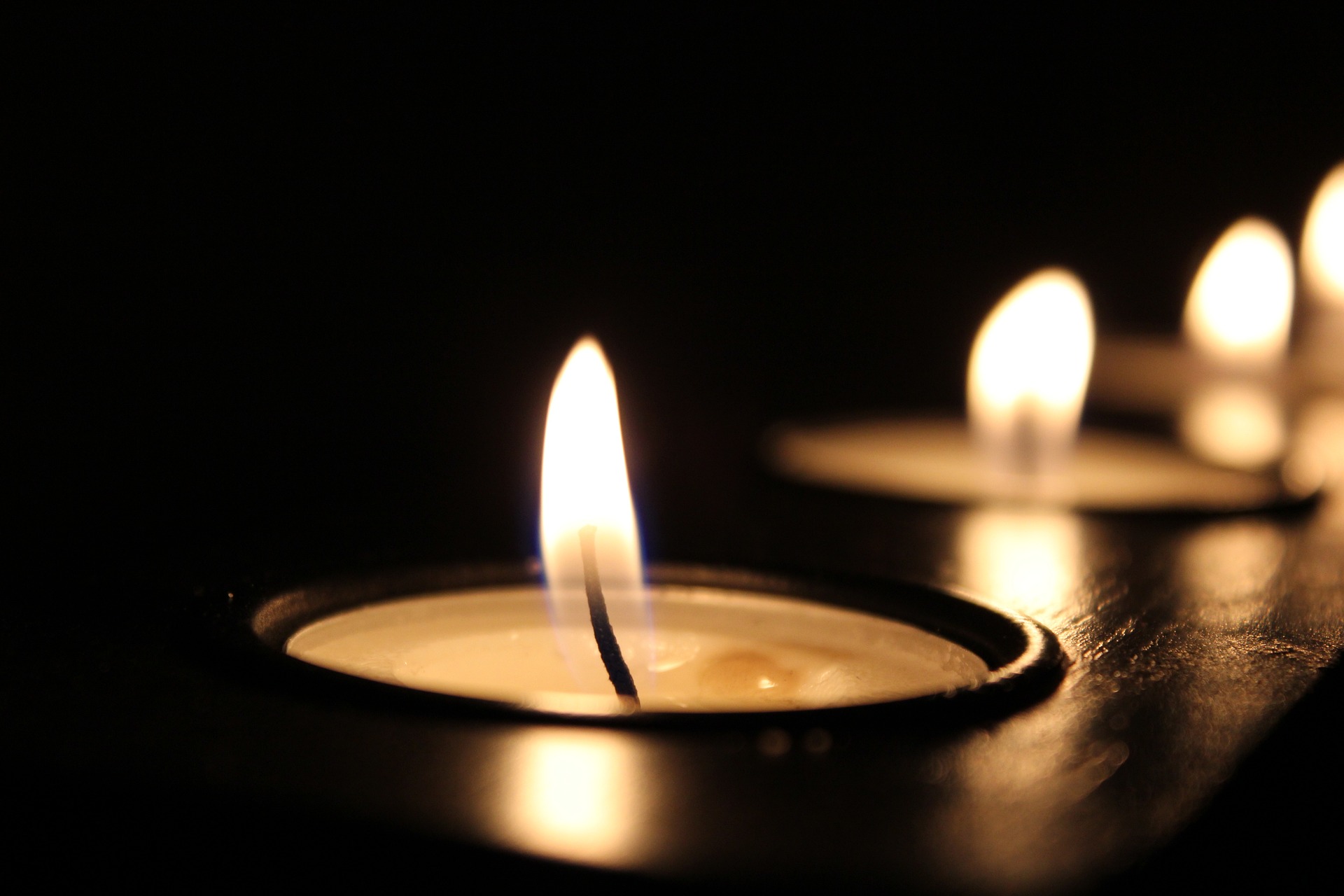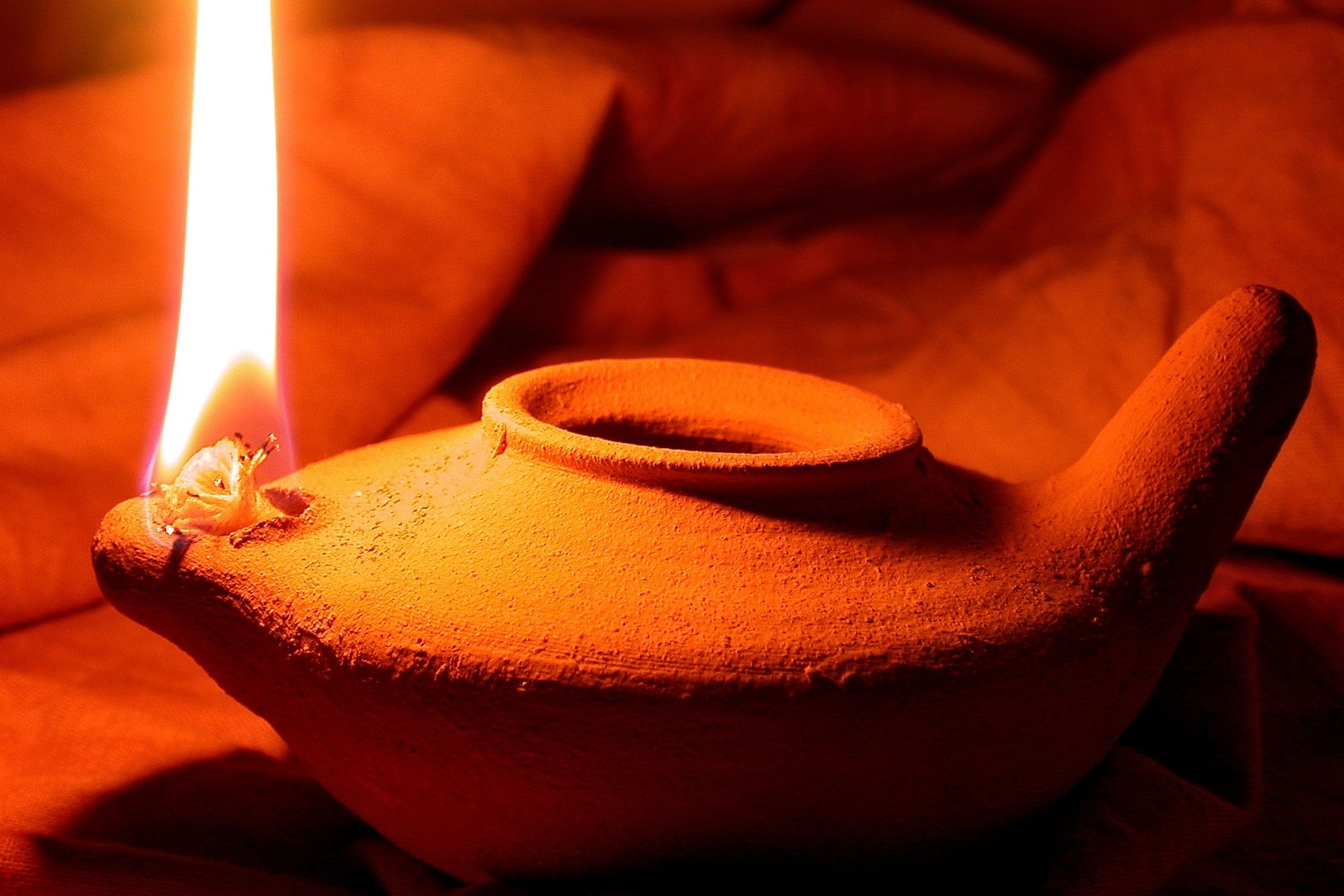Passion of the People – 1.1.2
Lighting as a New Phenomenon in Cultural History
Even though we take the lighting of streets and rooms for granted today, it is a comparatively recent invention in human history. For a long time, the Sun was man’s only source of light during the day, until man discovered fire as a source of light. The light of campfires, pine shavings, oil and tallow lamps was a significant achievement.
The illumination of the night sky by the Moon was used for hunting on moonlit nights. The light was kindled in caves and rooms as well as outdoors at an early stage: around 260 BC, the lighthouse was built off Alexandria, and from the year 378 AD there are references to “lights in the alleys” – meaning street lighting in ancient Antioch.
Very early on, man also began to design vessels for carrying the precious light-giving flame in an artistic and practical way. Mostly clay or ceramics were used, but sometimes there were also elaborately crafted bronze vessels.
Much more elaborate than pine shavings and torches were candles, which have been known since around the 2nd century AD. The Etruscans put them in candelabra, the Romans gave them away at the winter solstice, the Saturnalia. These candles were made of beeswax or in a mixture with beef tallow. Beeswax candles were the preferred illuminant among the nobility and the upper bourgeoisie until the 19th century. Poorer people used oil lamps, which burned dripping, tallow or also different oils. But these illuminants were expensive, and so the day usually began with sunrise and ended with sunset.
In the 19th century, gaslight and electric light were added to the illuminations and especially the spread of electric light was an important element of the social transformation process of the 19th century. High costs for electricity production and power supply still delayed the spread of electric light at the beginning of the 20th century until it became widespread in industrialised regions around the 1940s. Only then it was possible to work at night; in factories, which could now be fully lit around the clock, shift and night work began. Working and living spaces were functionally separated from each other. The whole house could be adequately lit as needed and was now available for complete use even during the hours of darkness. The streets were added to the night-time living space.

Further Resources
Links below will redirect you to external websites. In accordance with the European data protection declarations, we would like to point out that by clicking on these links you may send data to external providers. We cannot prevent that.
Videos
![]() A brief history of lighting throughout the centuries
A brief history of lighting throughout the centuries
![]() 400,000 years ago, humans created fire. This is a tour through the visual history of light
400,000 years ago, humans created fire. This is a tour through the visual history of light
![]() Out of the Dark: The History of Illumination –This video traces the development of illumination techniques from the dawn of history until the mid of the last century. This is a video from 1954 that nevertheless traces the cultural history of lighting on the basis of impressive images. It is also an interesting historic document.
Out of the Dark: The History of Illumination –This video traces the development of illumination techniques from the dawn of history until the mid of the last century. This is a video from 1954 that nevertheless traces the cultural history of lighting on the basis of impressive images. It is also an interesting historic document.
 Evoluzione dell’illuminazione dei centri urbani – I webinar di Philips Lighting University – Signify
Evoluzione dell’illuminazione dei centri urbani – I webinar di Philips Lighting University – Signify
 Civico Archivio Fotografico | Luci e ombre. Piccola storia dell’illuminazione a Milano – Associazione MuseoCity
Civico Archivio Fotografico | Luci e ombre. Piccola storia dell’illuminazione a Milano – Associazione MuseoCity
 La LUCE nel Medioevo – Alessandro Barbero (Vercelli, 2023) | Inedito – Alessandro Barbero – La Storia siamo Noi
La LUCE nel Medioevo – Alessandro Barbero (Vercelli, 2023) | Inedito – Alessandro Barbero – La Storia siamo Noi
 La lampada e la Storia – Ars Europa Channel
La lampada e la Storia – Ars Europa Channel
Online Resources
![]() Timeline_of_lighting_technology – Artificial lighting technology began to be developed tens of thousands of years ago and continues to be refined in the present day. This Wikipedia article explains the timeline.
Timeline_of_lighting_technology – Artificial lighting technology began to be developed tens of thousands of years ago and continues to be refined in the present day. This Wikipedia article explains the timeline.
![]() The London Science Museum offers this short history of lighting
The London Science Museum offers this short history of lighting
 Storia dell’illuminazione artificiale e della sua evoluzione: dal fuoco ai moderni LED – Erminio Fonzo Geopop
Storia dell’illuminazione artificiale e della sua evoluzione: dal fuoco ai moderni LED – Erminio Fonzo Geopop
 Storia dell’illuminazione – Wikipedia
Storia dell’illuminazione – Wikipedia
 Sistemi di illuminazione dell’Italia antica – Carmine de Mizio
Sistemi di illuminazione dell’Italia antica – Carmine de Mizio
 Saturnali – Mark Cartwright, tradotto da Stefano Freyr Castiglione
Saturnali – Mark Cartwright, tradotto da Stefano Freyr Castiglione
Further Readings
![]() Blog post of English Heritage that gives a short history of lighting linked to cultural heritage
Blog post of English Heritage that gives a short history of lighting linked to cultural heritage
![]() The London based Mayfair Gallery gives an overview to antique lighting
The London based Mayfair Gallery gives an overview to antique lighting
 L’illuminazione attraverso i tempi: dalle origini all’utilizzo ottocentesco del gas – Fondazione Neri Museo Italiano Della Ghisa
L’illuminazione attraverso i tempi: dalle origini all’utilizzo ottocentesco del gas – Fondazione Neri Museo Italiano Della Ghisa
 La storia della candela – Riccardo Tonani
La storia della candela – Riccardo Tonani
 I candelabri etruschi in bronzo – Eufemia Oriani
I candelabri etruschi in bronzo – Eufemia Oriani
Teaching Material
![]() “Academy” of inspirational research-informed training and resources (London Science Museum)
“Academy” of inspirational research-informed training and resources (London Science Museum)
For Kids
![]() Teaching material for kids (London Science Museum)
Teaching material for kids (London Science Museum)





